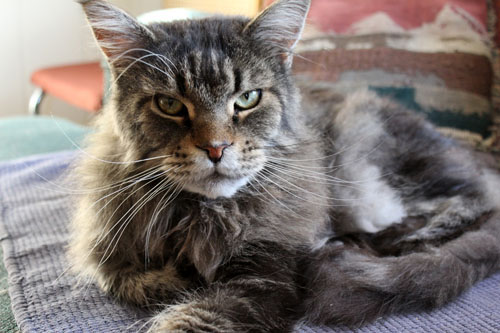ADI DA SAMRAJ: There’s no reason to suggest that the body-mind is only associated with a superficial process. The in-depth dimension of existence always exists. The sleep state is simply one that relaxes association with perceptual and conceptual experiencing and associations and functions. It’s no longer involved in memory, or identification of egoic self with the body or the body-mind location or relations. And even if you get up from sleep and go about and live and get attached and do all that for another day, every time you go back to sleep, you don’t have anything like that there again.
So all your troubles are in your attachment to, or illusions about, waking and dreaming. And you can struggle with all that and so forth. Basically, the wise have always chosen to economize that in order to maximize time spent set apart, sacred time, or otherwise, to intensify the in-depth process even in the midst of daily activity, as you imagine the bees might do, as compared to the lions, who lie about.
The lions set aside rest time, and have their in-depth perhaps more there, and are more, when active, in the short-term mode of handling business–the body turned on by glandular this, that, and every other thing, for the hunt, and survival purposes, and so forth. So it’s all done quick, and efficiently, and then they return to rest. So maybe the lions are less deep in their waking moments, but enter into their depth a lot of the time because they have so much of it left over.
And the bees, who have little leisure, it seems, are, in their depth, profound moment to moment. And they get prasad from the queen, whom they serve, at foot, even with their tongues, and she provides them with a nectar that keeps them all attuned, it seems, to the chemical integrity of the hive and its Contemplations beyond, or subtler, deeper, such that they don’t require outward-directedness when they fly from the hive. They are primarily in a kind of exalted condition in which to allow their bodies to do their functioning while they otherwise remain resonantly absorbed.
Getting to purr is something like that. Generally, a human being would find it difficult to find such a mechanism working in themselves physically. But what it feels like is the shift that would have to occur in your whole relationship to the physical, and so on—just as a shift has to occur in order to purr, just as a shift has to occur to see one of those 3-D images in that just-seems-like-a-smear-of-pattern in those pictures I just described.
But when they are purring, cats are not just in the ordinary sense physically aware. Just to be able to get to purr, they have to be in that other dimensional way of relating to the physical, where they’re peripherally associated with it. In fact, that is the way that vibration of the purr occurs. You can feel how they feel themselves as energy, and they basically feel the physical is transparent to that. At the level of energy, you can feel and even see right through the physical. They are meditating on that, knowing that, with each moment of that purring. That’s how they are aware of the physical when that’s occurring.

They’re not afraid, in the slightest. And yet, if provoked by anything, instantly the cat can respond, even from that purring state. Zap!—they can deal with an environmental intrusion of some kind.
Having that quickness, they can afford to get into this deep state. More tamasic animals have to be sort of semi-awake all the time. They have to see something coming for a long time just to get around to maybe doing something about it. If you haven’t seen the chameleons down here in Fear-No-More Zoo, you ought to go and check them out, in terms of their extraordinary non-quickness, generally speaking. But the cats have the gift of being able to purr, because they can respond suddenly. Human responses are quick, but not as quick.
Cats contemplate, meditate, inherently. It is structurally determined, even. Disturbed cats don’t purr. Jostle a cat physically, require physical attention from a cat, they stop purring. They can’t purr and be physically active in the ordinary sense other than in the act of purring.
Excerpt from a talk by Adi Da Samraj, December 13, 1996
All content and images © 2019 ASA. All Rights Reserved.
